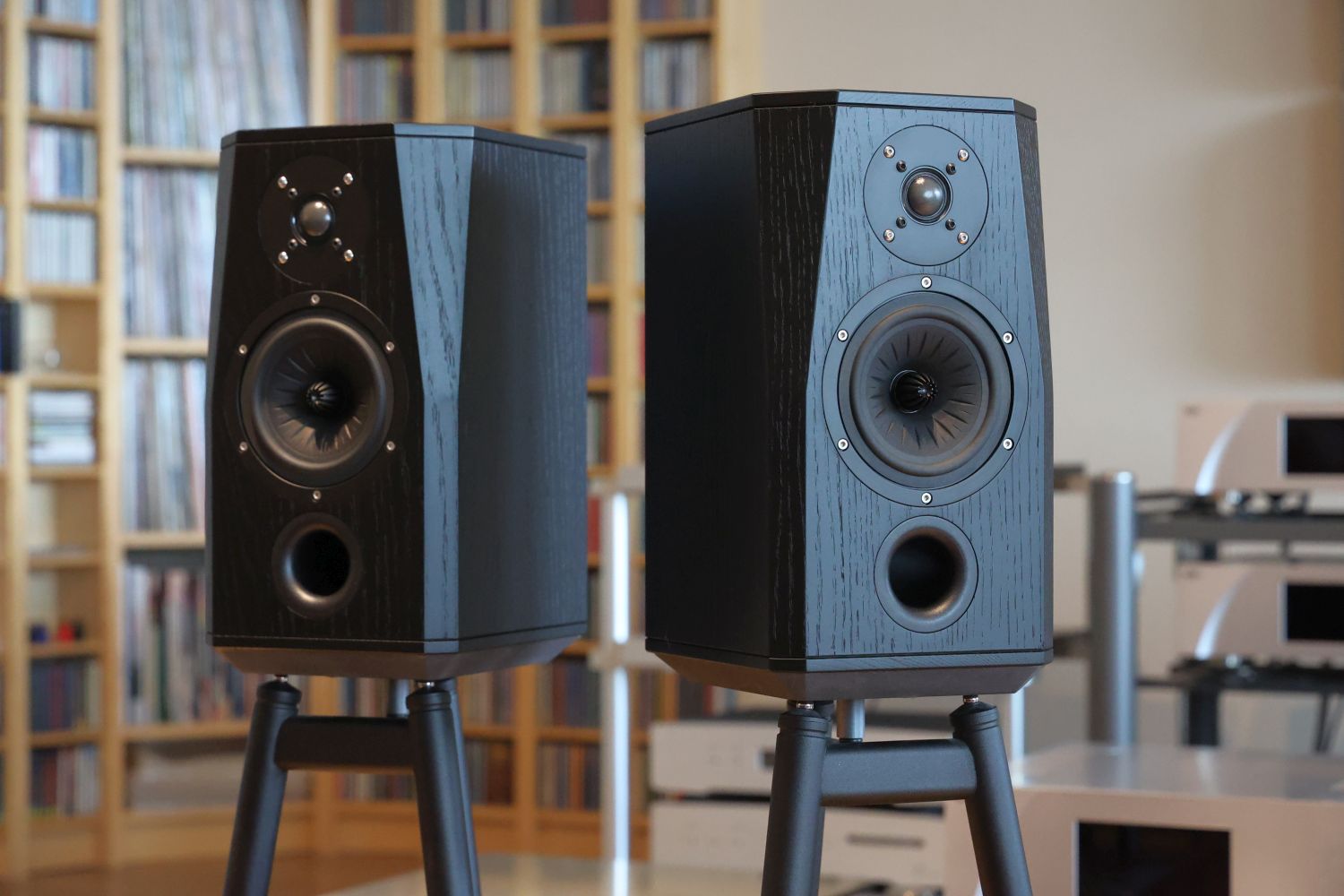
Review sample supplied by Driade
Benelux retail prices per pair, including VAT:
Premium Model 9 in Oak – 4.000 euro
Solidsteel Tripod Stands with custom Driade HDF top panel – 600 euro per pair
HDF Fronts with black fabric & Neodymium Magnet-coupling – 300 euro per pair
Copper spikes and copper protective floor discs are included
Hand-made in the Netherlands and Germany
Based in the Netherlands, Driade speaker enclosures and drivers are exclusively manufactured in the Netherlands and Germany. The drivers used are designed by Arnold Heres in cooperation with Philipp Vavron, and the crossover parts are custom-made in Denmark. The sleek triangular outlines hide a fanatical attention to detail with a carefully selected mix of massive natural wood and double-sided, oak-veneered MDF and the use of premium parts throughout.
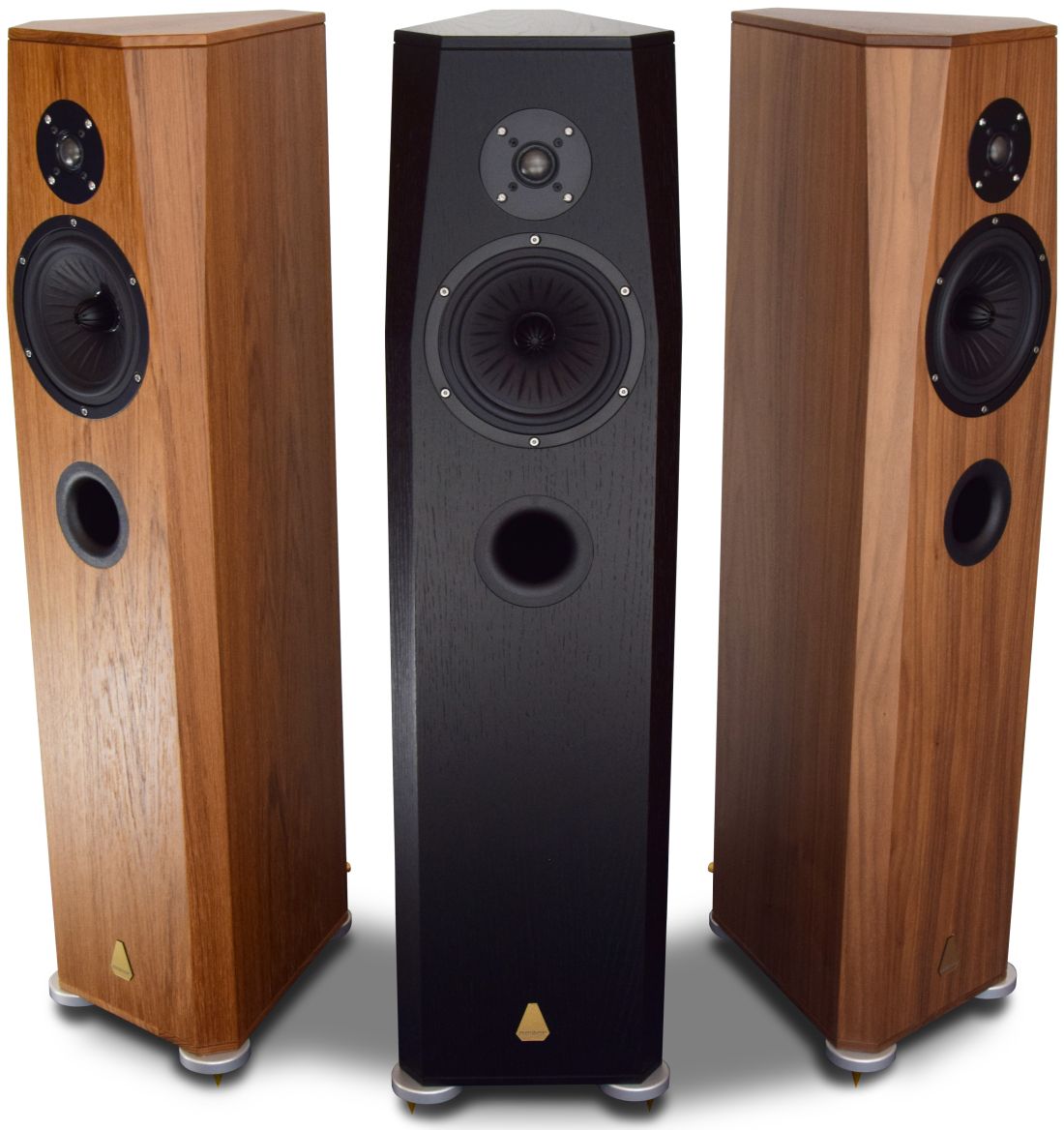
Premium Model 2S
The previous Driade loudspeaker I reviewed was the Premium Model 2S. These speakers surprised me with their confident, coherent, lively, and engagingly expressive performance. I was particularly impressed with their bass behavior, which, unusually for a bass-reflex design in my room, was tight, crisp, and expressive, even more so than my Magico S1 MkII, and extended more deeply.
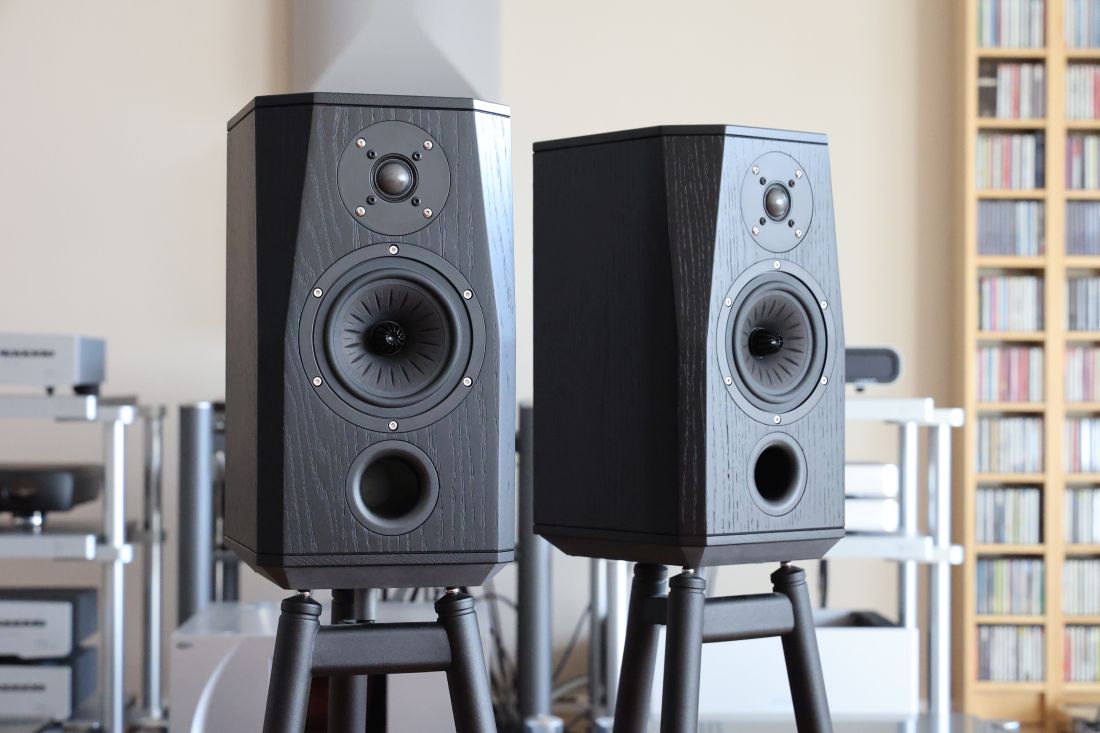
Premium Model 9 – A brand-new Monitor Speaker
The main design aim for the Premium Model 9 has been to create an advanced yet natural-sounding monitor speaker with a linear reproduction for the entire frequency range. The famous Rogers LS3/5A has inspired some of its qualities, such as its small size and realistic midrange. But for the most part, the Premium Model 9 has little in common with that classic speaker. The size of the Premium Model 9 is 37 x 20 x 23 cm (H x W x D).
The design has been carefully balanced using a woofer with an ultra-low-mass cone to achieve tight, controlled, and powerful bass down to a respectable 42Hz at -3dB. The cabinet and port have been assembled precisely to retain composure even when playing very loudly.
Further, the speakers have been designed to obtain cleanly detailed treble that extends to 20kHz and beyond, with a linear response up to 30 degrees off-axis. Special attention was paid to achieving vivid imaging combined with a soundstage that extends freely from the cabinets.
Also ranking highly among the design goals was ideal phase behavior to obtain a perfect transition between woofer and tweeter. A pivotal part of this is the crossover design. Driade Systems design all their crossovers from scratch and build them using only the very best parts. The Premium Model 9 is no exception; rather, one might even say its crossover is unusually sophisticated for a monitor loudspeaker in its price range.
Another design goal was to obtain a friendly impedance without dips to make the speaker easy to drive, even with low-power tube amplifiers. It’s rare for any crossover to contain no dips, but with an impedance that does not dip below 6 Ohms and hovers around 10 Ohms for most of its range, the Premium Model 9 presents a textbook 8 Ohm load, and amplifiers should have a particularly easy time. Even low-power single-ended tube designs apply.
Finally, the Premium Model 9 crossover is extra special because it was designed by Arnold’s long-trusted engineer, Maarten Tjallingii. Naturally, the speaker’s overall design aesthetic and cabinet construction are still very much Driade, all carefully honed by Arnold. The result is a sleek and elegant yet very high-performance monitor speaker that both Maarten and Arnold take great pride in.
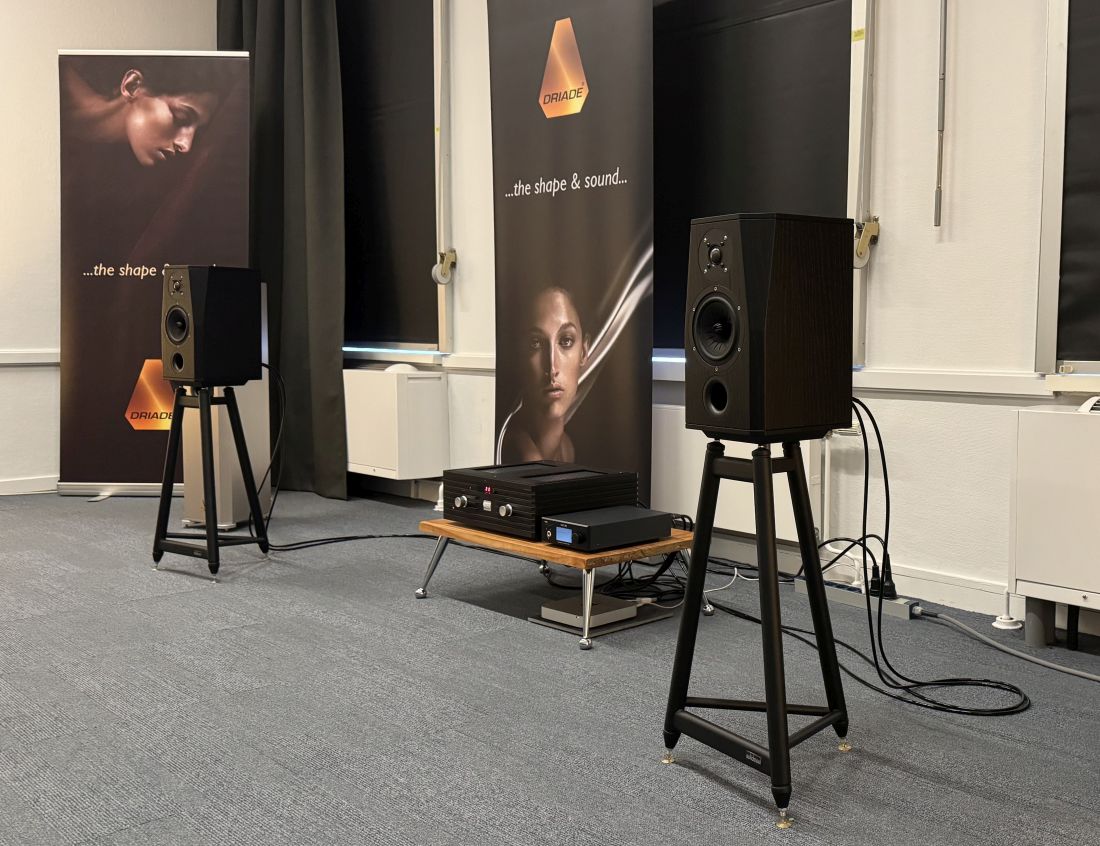
Listening Part One – First Impressions
When I attended the premiere of the Premium Model 9 in the Driade room at the Dutch Audio Event in October this year, it was immediately clear there was something very special about the Premium Model 9s. Driven by the Soulnote A-2 integrated amplifier partnered with a relatively modest Weiss DAC 202 and using Driade Flow interlinks and speaker cables, my critical brain searched for flaws, only to find none. If that sounds like faint praise, I should add that I landed in the Driade room after hearing countless other systems ranging from serious to seriously expensive. Yet, none of the system/room combinations heard so far had sounded so utterly well-balanced as this room. The monitors demonstrated qualities I am familiar with from the Model 2S, such as articulate and precise bass with an enthusiastic and expressive delivery. Still, there was something else, a hitherto unheard quality extending from the upper midrange into the treble that especially took me by surprise.
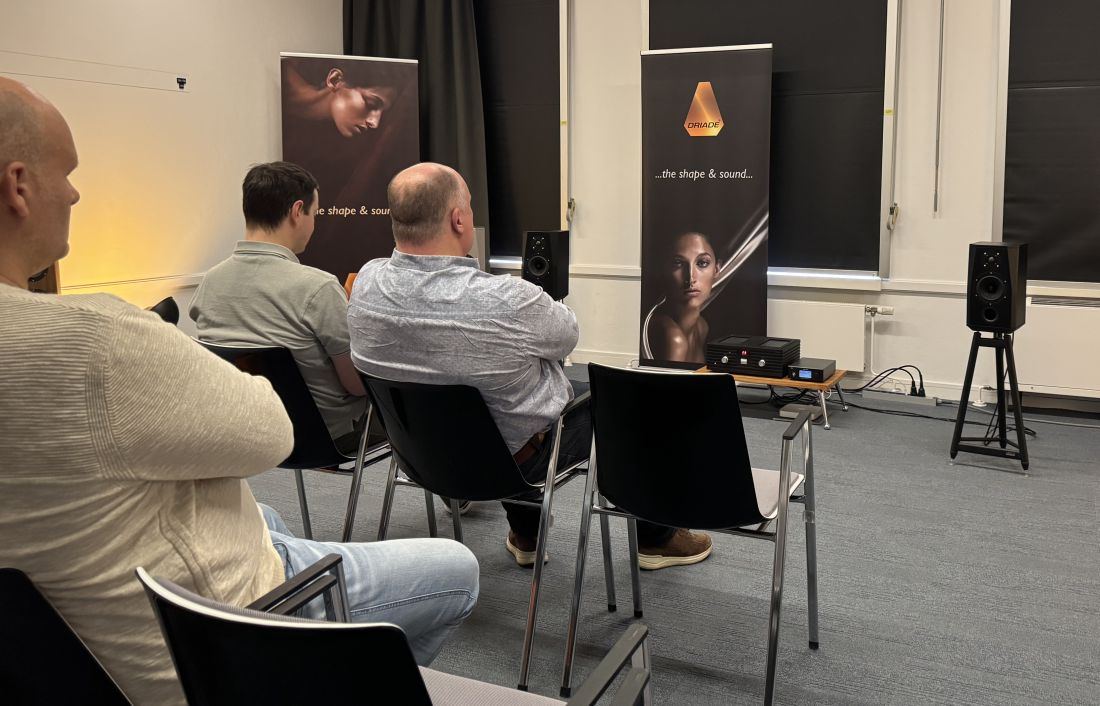
To explain this, I need to step back a few years to my review of the Premium Model 2S. As enthusiastic as I was about many aspects of these speakers, their Achilles heel, I would say, was their treble performance.
With a long history involving electrostats, magnetostats, and ribbon speakers, I have grown particularly demanding of treble performance. Of course, not all ribbons are created equal, and it is hard to achieve perfect integration with a hybrid ribbon-dynamic driver design. Nevertheless, I’ve come to expect a certain quality from the treble range. So far, Magico has been among a select range of speaker brands delivering the high-frequency performance I crave. I should note that the current Magico S- and M-series differ significantly from the initial Q-range, with equally high resolution but a more organic and much sweeter balance. In any case, based on my listening experience in the Driade room, the feeling arose that the Premium Model 9 could be added to that list.
Uniquely for a “regular” textile dome tweeter, the high frequencies did not call attention to themselves in any way. The treble sounded characterless, in the best interpretation of the word. This is something I normally only hear with diamond, beryllium, or the best foil tweeters.
To my astonishment, there was no edge, grain, or hardness. Neither was there any added warmth, imposed mildness, or any other aspect to stand out. Yet, the resolution was excellent. And to my delight, the treble does indeed extend linearly with no roll-of I can discern. Granted, at 53, my hearing is no longer as good as when I was 18, but I still frequently hear noticeably rolled-off designs, of which I am not a fan.
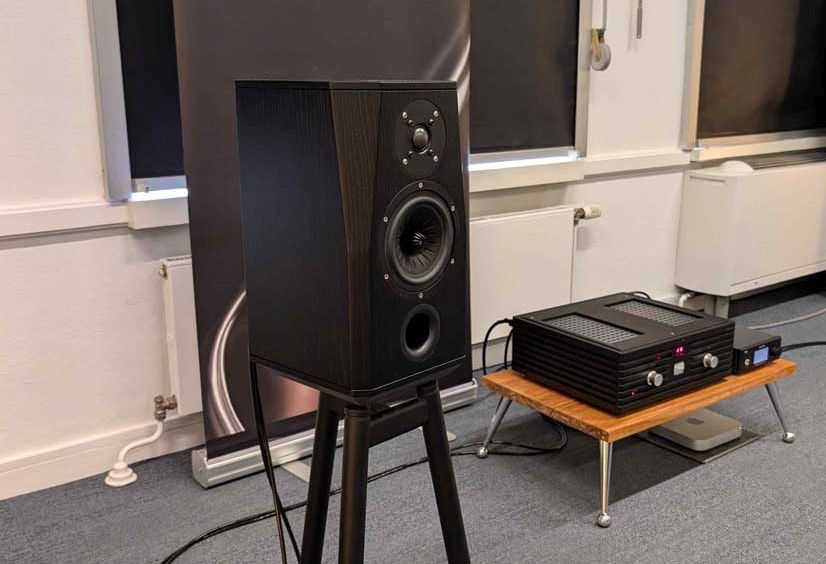
I listened to a wide range of tracks while changing seating positions, only to reinforce my initial impressions. The speakers sounded beautifully open, communicative, and utterly selfless. As expected, the listening position had a significant effect on how the bass interacted with the room resonances, just as it does in all other rooms. However, apart from bass behavior, the sound remained uniform regardless of the listening position.
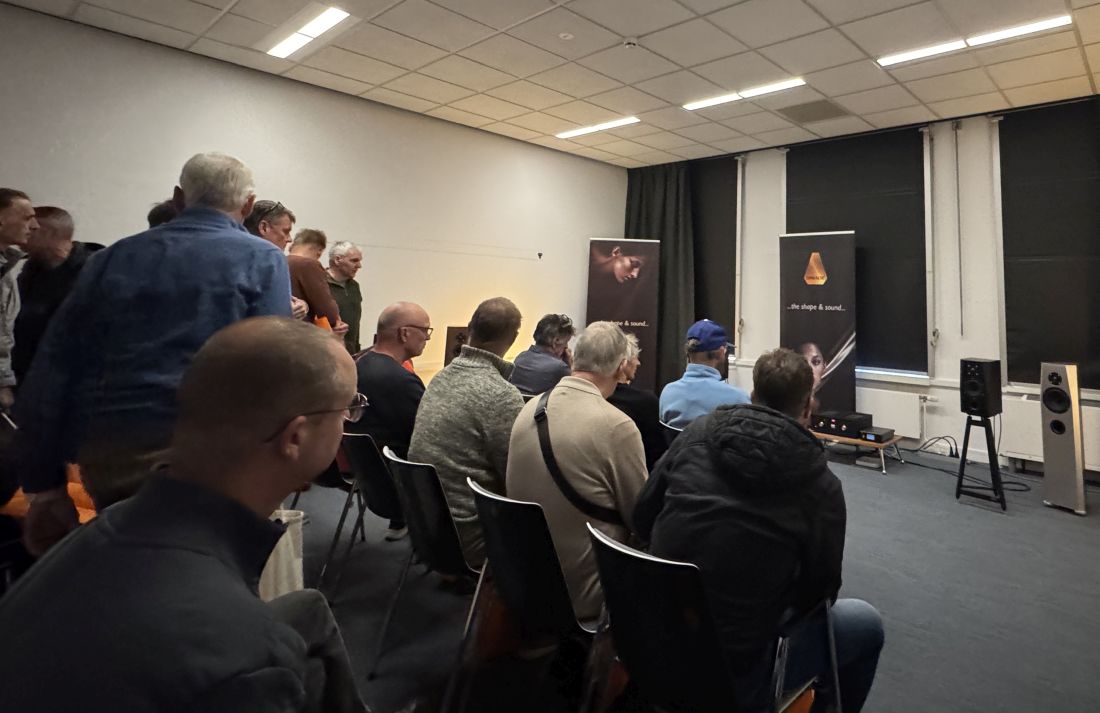
With these positive first impressions, expectations were shaping up nicely for the home audition and a successive review already planned for after the show.
Next: review Context and Listening Part Two
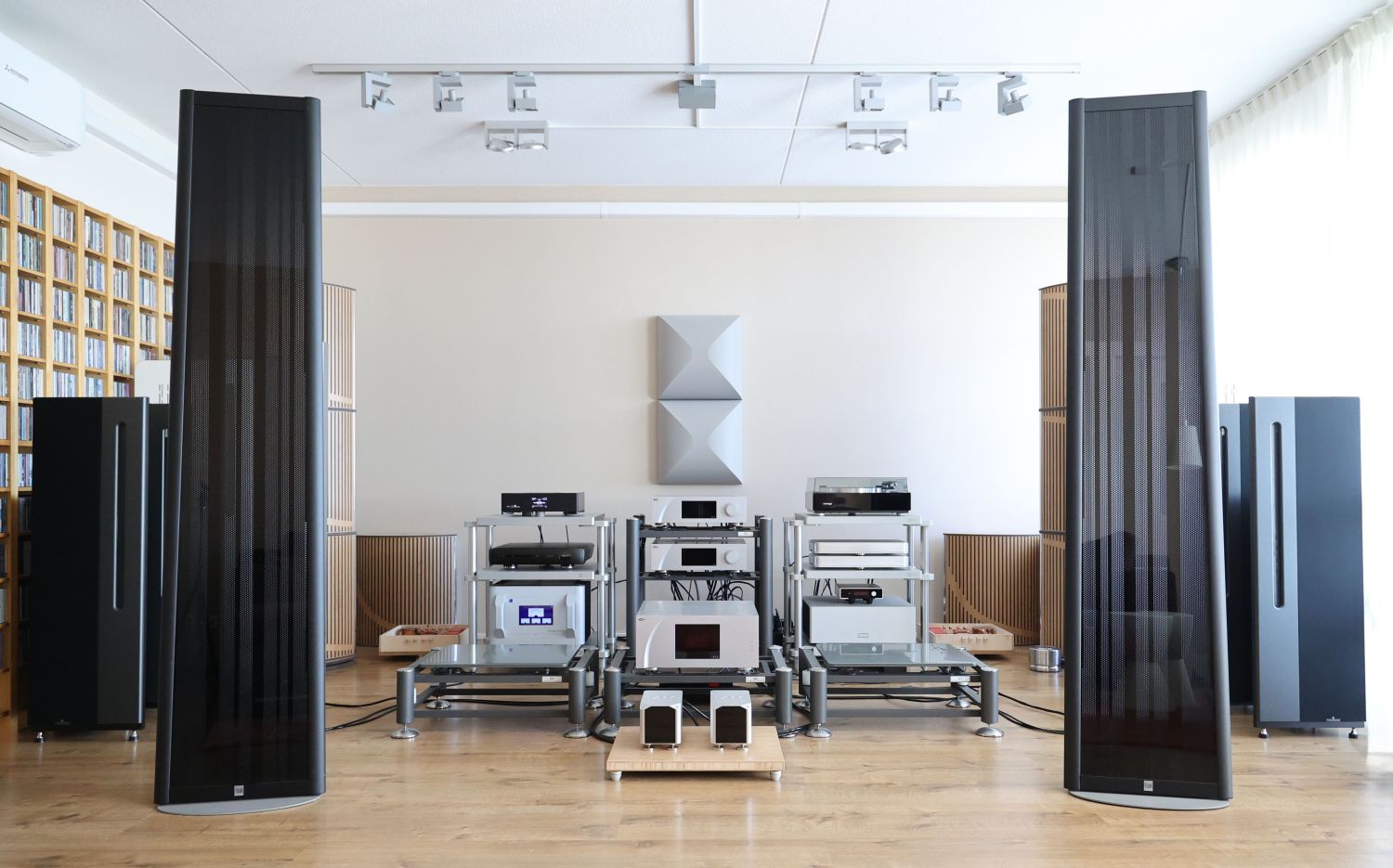
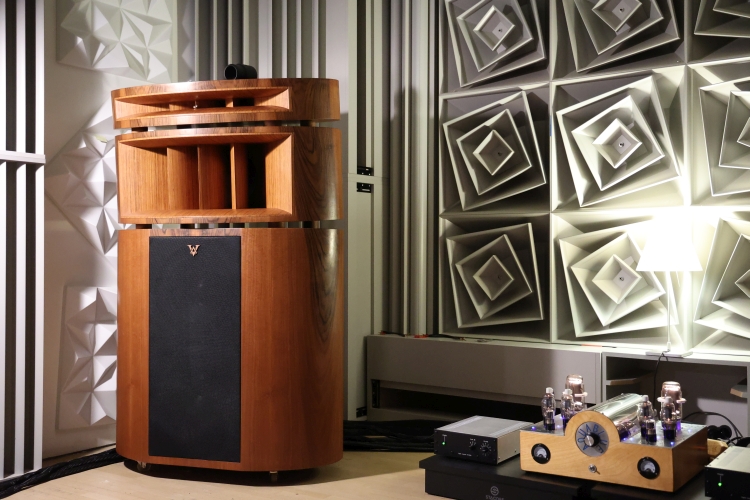
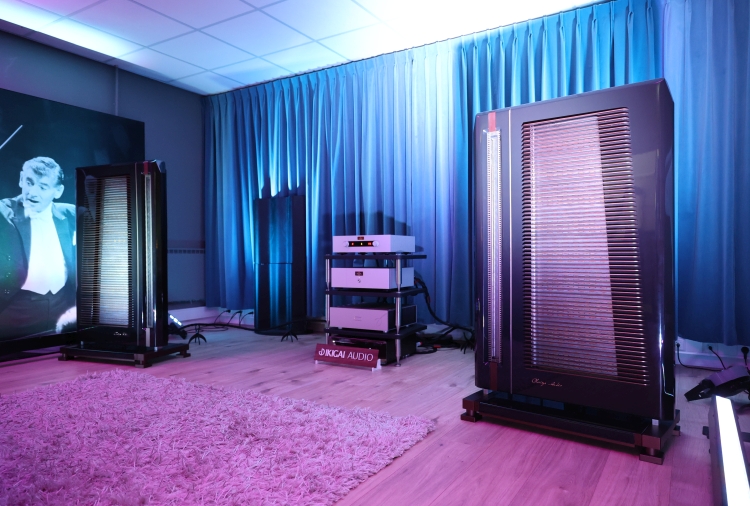
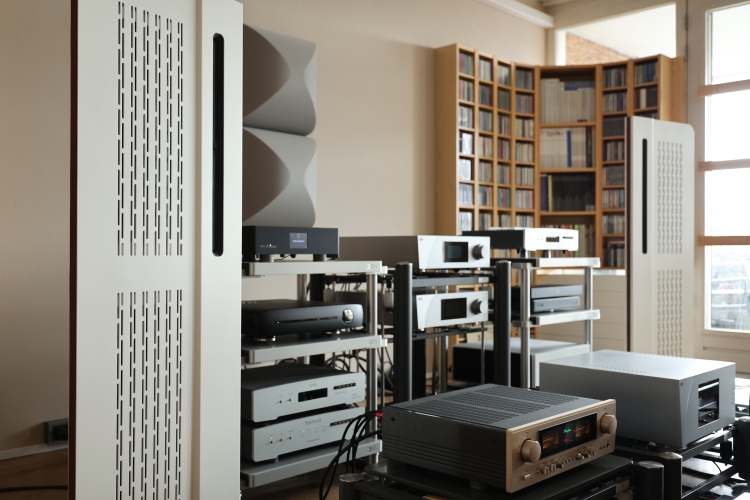
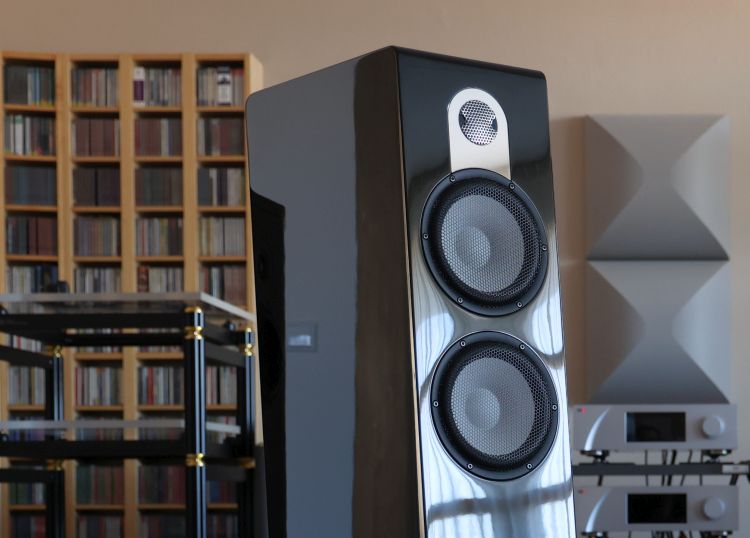
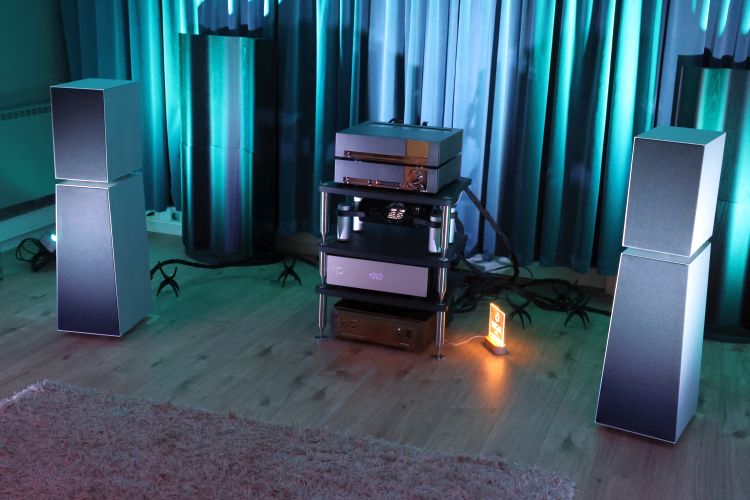
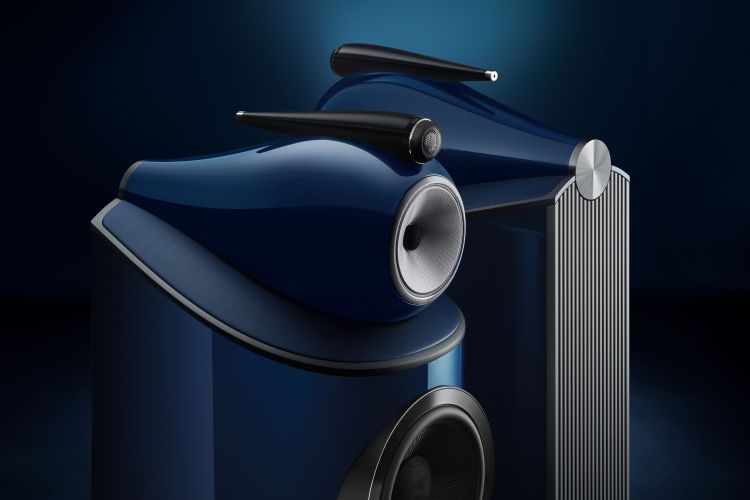
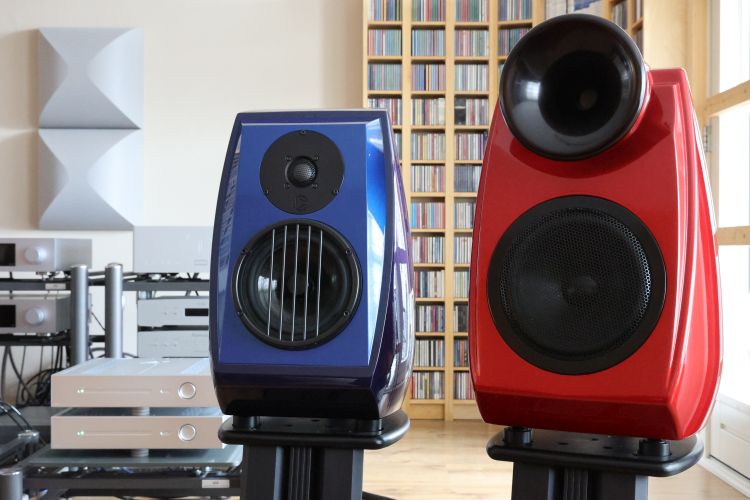
Hi Christiaan,
How do they compare to Kudos Titan 505 or 606 speakers? Can you please shortly describe the Kudos house sound ?
Hi Sunil, I’m afraid I have no experience with Kudos speakers.
(all loudspeakers I reviewed can be found in the reviews section)
Thanks Christiaan for the reply
Hello Christiaan,
Is it already time to show your new special finish Driade Premium Model 9? I am very curious how it looks.
The performance of this monitor seems very good indeed. The rather strange situation is that we will have to spend an almost insane amount of money on an amplifier that will show all its virtues. Where is the €4000 amp that does it almost all for this speaker?
You and me both! 🙂 But I do not have them yet.
Indeed, the quality of these speakers at such a relatively low price point has posed an interesting dilemma. Of course, you don’t HAVE to use a CH A1.5 amplifier. The speakers already convinced me when they played with a mid-class SoulNote amplifier at the show. But, as I found, they can deliver even more, given an even better amplifier.
There are a few very good amplifiers under or around the 4000 euro mark, such as the SoulNote mentioned above, but also the NuPrime AMG series, Lejonklou, and Kora. I’m sure there will be more, but these are just the ones I reviewed.
From my many years of experience, I’ve found that this principle applies to all well-designed speakers in any price category. In fact, you could say it’s a good test of a well-constructed speaker — try powering it with an amplifier from a higher price range. If the sound quality still has room to improve, then you know you’re dealing with a good product.
I recently had a similar experience with my own setup. I powered speakers worth €4,000 (specifically the Radiant Acoustics Clarity 6.2) using electronics worth €40,000. And yes, it sounded fantastic. Was it a balanced pairing? Of course not, but as a test of the speaker’s potential, it’s a great indicator and speaks to a certain level of design quality.
Hi Christiaan!
I think you should take soul note A-2 And A-3 into review?
The reason i’m interested is that i own myself A-2 and i really like that amplifier, it has natural tube like flow and gorgeous sound.
This hobby being what it is, i am interested in trying the next step A-3 at some point, but i’m starting to think they might be actually completely different amplifiers..
Every time i have heard A-2 on exhibits, i have always liked the sound on different systems, but A-3 has never been able to sway me..
I feel that it has been tuned too neutral for me, going away from rich sound of A-2..
Anyway, if you tested both of them, it would be interesting to read how they differ or are similar to each other.
Take care!
Best
Jarkko
Hi Jarkko, I agree these are interesting amplifiers. But, so far, no reviews for SoulNote have been planned so far, and I am fully booked for the next months. Nevertheless, when they approach me for a review, I will not say no!
Regarding the differences you heard, perhaps this has to do with the amplification principle. Purely deducting from the specs, the A1 and A2 seem to run in Class-A, while the A3 uses much less power in idle, while offering a higher output. Hence, I suspect this amp may be in Class A/B. But perhaps best to double-check this with the manufacturer.